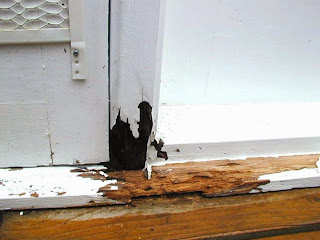THE FIRE AND DEATH RISKS ASSOCIATED WITH PORTABLE SPACE HEATERS
Space
heaters annually account for one-third of reported U.S. home heating fires, and
four out of five associated civilian deaths.
Therefore, the safety of heating equipment is a growing concern. Firefighters say that about 80 to 90 percent of the heater fires occur at night when the residents are asleep.
During winter months, the potential for house fires increases as people seek warmth using electric space heaters. Electric space heaters do not have an open flame, but the heating elements can get hot enough to ignite nearby combustibles.
During winter months, the potential for house fires increases as people seek warmth using electric space heaters. Electric space heaters do not have an open flame, but the heating elements can get hot enough to ignite nearby combustibles.
Stationary (fixed) and portable
space heaters, excluding fireplaces, chimneys, and chimney connectors, but
including wood stoves, accounted for one-third (33%) of reported 2007-2011 U.S.
home heating fires, four out of five (81%) associated civilian deaths, more
than two-thirds (70%) of associated civilian injuries, and half (51%) of
associated direct property damage.
The leading factors contributing to
ignition in home heating equipment fires were failure to clean (28%), heat
source too close to combustibles (14%), and unclassified mechanical failure or
malfunction (12%). Heat source too close to combustibles was a factor in half
(53%) of associated fire deaths.
Placing space heaters too close to
combustibles such as carpeting, bedding, draperies, newspapers or books,
clothing, furniture, or flammable liquids is the leading factor contributing to
home heating fires. Space heaters need
space.
That’s a key message from the nonprofit National Fire Protection Association (NFPA) and the United States Fire Administration (USFA), who are teaming up to reduce the risk of home heating fires this December, January and February, when half of all U.S. heating home fires occur.
That’s a key message from the nonprofit National Fire Protection Association (NFPA) and the United States Fire Administration (USFA), who are teaming up to reduce the risk of home heating fires this December, January and February, when half of all U.S. heating home fires occur.
As
part of their joint fire safety campaign, “Put a Freeze on Winter Fires,” NFPA
and USFA urge everyone to practice extreme caution when using space heaters
this season. Keep things that can burn
at least 3 feet away from space heaters, and create a three-foot
“kid-free zone” around them.
Make sure to use equipment that has the
label of a recognized testing laboratory, and have a qualified professional install
stationary space heating equipment according to the local codes and
manufacturer’s instructions.
The most
dangerous space heaters are the kerosene models with an open flame. A
safe alternative would be a low-wattage electric space heater. Family
members should take special note of elderly or disabled relatives using space
heaters. It is common for those with arthritis, diabetes, and circulation
problems to require additional warmth. A personal heater may be the
perfect solution – as long as it is a safe product and it is used properly:
For portable electric heaters:
·
Place them on a solid, flat surface,
away from high traffic areas and doorways.
·
Turn them off when you go to bed or
leave the room.
·
Use and purchase heaters with an
automatic shut off so if they’re tipped over they will shut off.
·
Plug power cords directly into outlets
and never into an extension cord.
·
Inspect for cracked or damaged, broken
plugs or loose connections; replace before using.
· If you are unable to plug the unit directly into a socket
and have to use an extension cord, consider using a heavy-duty cord
marked with a #14 gauge or larger wire (#12 gauge is larger than #14 gauge). An
incorrectly sized cord could create a fire hazard. If the heater’s plug has a
grounding prong, use only a grounding (three-wire) extension cord.
· Never run the heater’s cord (or any cord) under rugs or
carpeting.
· Do not leave the heater operating unattended. Turn the unit
off when you are sleeping. Portable electric space heaters are designed for use
only as temporary supplemental heating and only while attended.
· To prevent electrical shocks and electrocutions, keep
portable electric heaters away from water, and never touch an electric heater
if you are wet.
· Do not use an electric heater as a dryer by placing clothing
or other fabric over it, and never use a heater to thaw pipes.
· Keep the heater in safe, working condition. Replace missing
guards and controls at once. Never operate a defective heater.
· Keep children and pets away from space heaters. Place the
heater on a level, stable surface where it will not be tripped over, bumped
into, or pushed over. Children should not be permitted to either adjust the
controls or move the heater.
As
with any type of heating system, install and maintain at least one smoke
detector on each floor of your home. Make sure each smoke detector is in good
working condition at all times.
In
the event of any fire, in addition to CO, there are Products of Incomplete
Combustion (PICs)—known carcinogens—released into your home by smoke and soot. This presents a serious health hazard.
Winter fires are preventable! For more
heating safety advice from NFPA and USFA’s “Put a Freeze on Winter” campaign,
visit www.nfpa.org/winter.



























